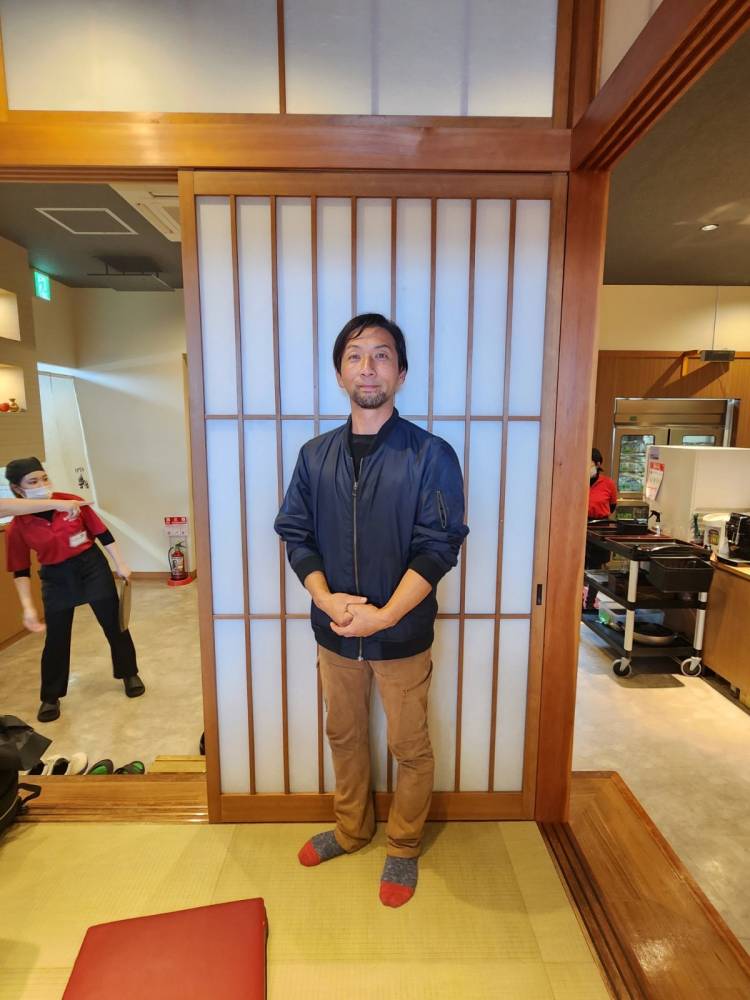Hidden Japan: Award-winning sake, heavenly Iga beef

I am writing this piece on my way back to Osaka from beautiful Mie Prefecture, for Kitchens of the World (KOW): Hidden Japan. KOW is my one-of-a-kind, personally curated culinary tour.
This morning, we departed for Nabari, a leisurely and, for the most part, scenic two-hour drive from Osaka.
Our first stop was the Yumoto Akame Sansuie, an inn with a quaint little restaurant that specializes in seasonal fare whipped up from the best produce from the area. We were in awe of the spread that was so meticulously put together for us to enjoy.
On the menu were little dishes like yuzu mushroom, simmered duck loin, smoked duck breast, soy-cured duck egg yolk, and sweet potatoes.
A special fish that thrives only in the clear waters of Nabari was dried overnight then cooked and served with a pickled plum. A refreshing cabbage salad with kiwi cheese dressing was part of the menu, and so were dashi rolled eggs, sea bream sashimi, and pork shabu-shabu.
As it is not customary in Japan to sip shabu-shabu broth, a bowl of miso soup was served, accompanied by a variety of pickles, and a bowl of the luscious Iga rice—sweet, delicate, aromatic, soft, white as snow. Iga rice is ranked the best in the whole of Japan.

Sake and Iga beef
The inn’s surroundings were picture-perfect, so we posed by the brook to capture the moment before we departed for Akame 48 Waterfalls. It is one of Japan’s most breathtaking hiking trails, where many picturesque waterfalls simply take your breath away. The place is home to giant freshwater salamanders and is also known as the former training ground of the Iga Ninjas.
When blessed with pristine water, and the best quality of rice, make sake! Takijiman Sake Brewery does just that.
Takijiman sits at the Iga Basin, by the mountainous area of Mie. Takijiman has been awarded gold at the Annual Japan Sake Awards; Kura Master held in France; Concours Mondial de Bruxelles in Belgium; and the International Wine Challenge in the United Kingdom.
Their sake was also served during a meal at the 2016 G7 Summit held in Ise-Shima. We had a taste of a couple of their creations, most of which were refined, elegant, and mellow.
When in Nabari, Iga beef is a must. Known as the “Yokozuna of Beef” (yokozuna meaning sumo champion, or world champion meat), Iga beef is of high quality, and comparable to Matsusaka and Kobe, with its own distinct character. It is the most elusive of wagyus, as the majority of the Iga cattle are consumed only within the area. We were told that only 130 or so cattle are slaughtered a year.

We had lunch at Yakiniku Okuda ,where we were served a plateful of assorted Iga beef prime cuts.
During lunch, Okuda Yoshiki, the Iga beef farmer who raised the cattle we were partaking of, honored us with his presence.
Okuda-san explained why Iga beef is special. He spoke of his cattle’s diet that consisted of local produce, fermented food, and a lot of rice. With a grin, he said that what is good for humans is good for the cow, this being his principle in raising cattle.
His cows eat a lot of rice which, he said, is what lowers the melting point of Iga beef fat. A lower melting point allows the fat to melt away faster, thus giving Iga a more concentrated, more pronounced beef flavor devoid of that cloying fattiness.
Aromatic, succulent, melts in the mouth, and simply divine—Iga beef is heaven in a bite!

Mushrooms
KOW being a food trip, I always have to let my participants, as much as possible, have a taste of as many local culinary delights as possible. Mushrooms are one of them.
We drove to East Nara, to a little log cabin restaurant tucked on a curb along the mountainside, called Kinokono-Yakata, Higashiyoshino-Village.
The restaurant was quaint and homey. There, the mushrooms served are grown at special mushroom nurseries, misted constantly with water.
At Kinokono-Yakata, we had large shiitake, eringi (trumpet mushrooms), giant shimeji, and a variety of oyster mushrooms.
To fully enjoy the freshly harvested edible fungi, we simply had to grill it.

There is a right way of doing it. Shiitake mushrooms were to be grilled cap-side down, without flipping. When it sweats, the shiitake is ready. Enjoy it dipped in salt or ginger soy or ponzu sauce.
Shimeji and oyster mushrooms were first separated, the eringi torn by hand, then grilled, turned on all sides till done.
To see the growing mushrooms, and tasting them freshly picked, was a lovely experience.
For dinner, we drove to Ogawa, Higashiyoshino Village, Yoshino-gun, at Nara Prefecture. I have always loved this location.
Looking out the window, a brook made colorful by the foliage of autumn makes it a sight to behold.
After gasping at the view, everyone took notice of the artistically mounted spread, this time of Nara specialties.

I have a penchant for wild boar, so I had to let my group taste the delectable wild boar shabu-shabu.
Presented with the hotpot were duck loin with mountain peach, ginko nuts, and other tiny bites.
We also had venison sashimi, grilled Yamato beef and pork fillet steaks, shrimp and seasonal vegetable tempura, egg custard (chawanmushi), vinegared vegetables, crab claws and radish, persimmon leaf sushi with pickles, and sweet bean jelly for dessert.
We left Nabari and Nara content, with a lot of photos and memories, our bellies bursting and our hearts full.
Looking back, there is still so much about Japan that’s hidden, and waiting to be discovered.
Follow the author @iamreggieaspiras on Instagram and Facebook; reggieaspiras.com.


















